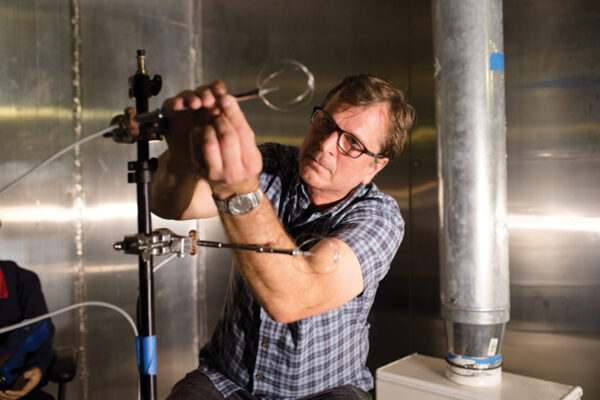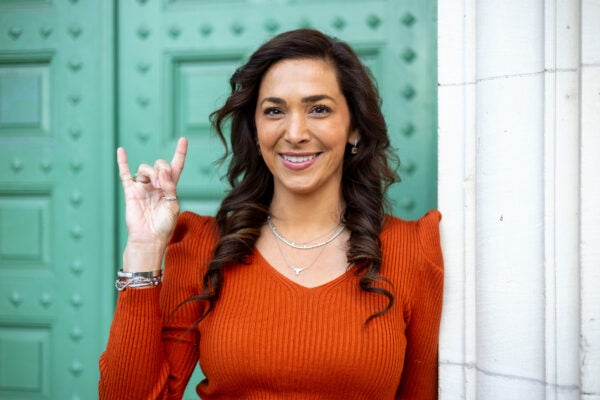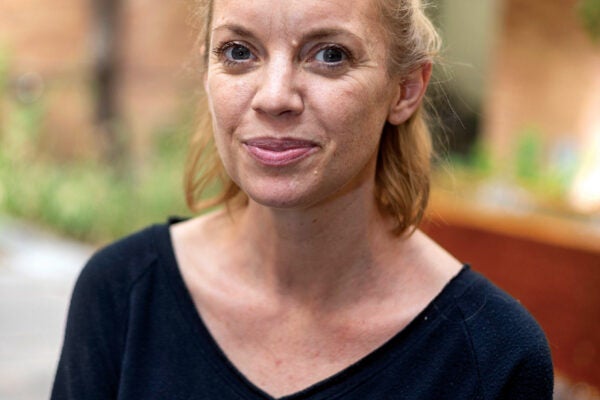A group of 120 researchers across 14 research units on campus have been selected by The University of Texas at Austin for Planet Texas 2050, the university’s first program under the Bridging Barriers project launched by President Gregory L. Fenves in 2016.
Planet Texas 2050 is a yearslong program to develop interdisciplinary knowledge and community-based strategies to help the state become more resilient to extreme climate and population changes. The program will look at interactions between environmental and human systems in Texas and develop strategies to better withstand floods, hurricanes and rapid population growth through the year 2050 so that Texas communities can thrive.
During the project’s first year, research was funded within the study areas of water, energy, ecosystems and urbanization. Collaboration has been an important cornerstone for the initiative, and each project includes team members from across disciplines on campus.
Katherine Lieberknecht, an assistant professor in the School of Architecture’s community and regional planning program, is a member of the Planet Texas 2050 Organizing Committee and also serves as the inaugural chair. She leads the Texas Metro Observatory project, a communication and data platform used to share information about Texas communities, bridge understanding of problems related to urbanization and develop solutions across the state’s metropolitan areas.
Lieberknecht’s project includes data from the 25 largest municipal metropolitan areas in the state, from sprawling urban areas such as Dallas and Austin to smaller cities such as Lubbock. For possibly the first time ever, the project seeks to compare the data that is being collected in these communities of different sizes so that planning for large-scale weather and population events can take place in any setting.
“I view UT Austin’s leadership and initial investment in this program as a critical spark plug to help our state figure out the future of Texas,” Lieberknecht says. “Although our research is focused on one state, findings will be relevant to other areas experiencing an increase in extreme weather events, increasing urbanization and rapid population growth. Texas’ diversity, rate of population growth and vulnerability to changes in climate make it a useful test case to examine approaches for planning new climate futures.
“Like many places around the world, Texas has entered uncharted territory as changes in climate, population and urbanization unfold,” says Lieberknecht.
For example, Hurricane Harvey dumped 60 inches of rain on Houston in 2017, killed more than 100 people and left $125 billion in damage, more than any natural disaster in U.S. history other than Hurricane Katrina, according to the National Hurricane Center. Last year, water service in Austin was impaired for a week because of flooding. As we approach the next several decades, Lieberknecht says, problems such as these will only persist if action is not taken.
Our state’s vulnerability to such problems is part of why Planet Texas 2050 is such a vital initiative. Researchers are working with communities to develop a tool kit of practical suggestions and strategies that city leaders, nonprofits, businesses and community members can choose from to work together and ensure the state’s resilience in the future.
Michael Young, associate director of the environmental division of the Bureau of Economic Geology in the Jackson School of Geosciences, is also an organizing committee member. He is studying how to connect groundwater, surface water and precipitation models in one numerical simulation. Using Houston as a test area, he seeks to discover whether it is possible to plan for and potentially avoid catastrophic floods by calculating storm sizes, river locations, river water levels and groundwater locations and combining that information into one computational analysis.
“It’s really kind of a large, holistic assessment of what is available to the state now in terms of water and energy systems and land resources and what might this look like in the next 20, 30 years. And what are the things that we can do today to be sure that when we get to 2050, we have a state that’s healthy, it’s diverse, it’s economically and environmentally just, all those things that makes people say, ‘Hey this is a great place to live,’” Young says.
“Resilience is really about communities returning back to their original function after a stress,” he says. “We need to make sure that we don’t have pieces that are missing to the puzzle, that when the projects are all done, they can fit into this mosaic of research and thinking that helps us to answer the goals of the project.”
Young has also played a hand in working toward a communication solution for sharing findings with the public.
“One of the very important outcomes of these projects is just getting the data collated into one place. Without that, you can’t make discoveries, and we’re really all about trying to make discoveries and having the data in the same location so we can make comparisons,” he says. “What we’re trying to do is create this kind of warehouse, which we’re calling DataX, that stores all of the data in the state related to water.”
Lieberknecht says the project has allowed her to channel her passion for creating a better tomorrow here in Texas through her research.
“Being a part of the Planet Texas 2050 team has reinforced my belief that I have one of the best jobs around,” she says. “I have a chance to embed my specific research interests … into a long-term, interdisciplinary and collaborative research project that seeks to make a real difference in people’s lives. At the same time, I’m contributing to efforts that hopefully will ensure that all Texans, including my own children, will have the opportunity to live in a place that is healthy, safe, just, and ecologically and economically vibrant.”
She says it has been most exciting to work with faculty members and researchers from a wide range of disciplines who all frame problems and solutions differently and offer new insights.
“It’s like being a student again. I can feel my brain growing in new directions,” she says. “I’ve also really valued having the chance to learn from Texans across the state about their knowledge, experiences and concerns about population growth and changes in climate.”
Young says that Planet Texas 2050 is, ultimately, an important step in determining the fate of Texas.
“I’ve been a professional researcher and doing science for over 30 years, and this is probably the most interesting project that I’ve worked on in decades because it’s very tricky, very ambitious,” Young says. “If we can get the data and get the models and the analysis done and get them communicated to the public … it could change the way the state thinks about its future and make a difference in terms of the decisions the State of Texas decides to make. And that would be an amazing outcome for a really large university.”




